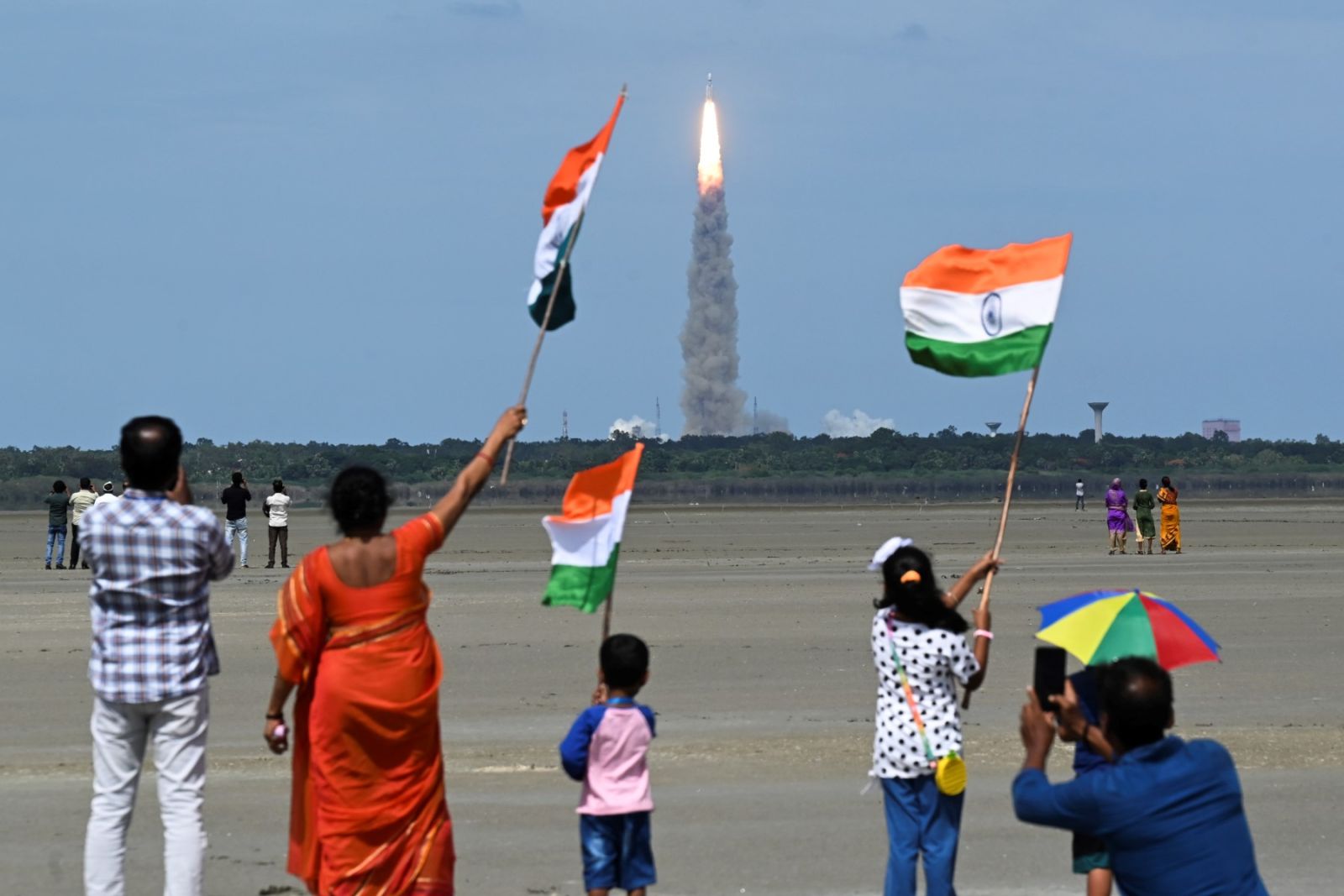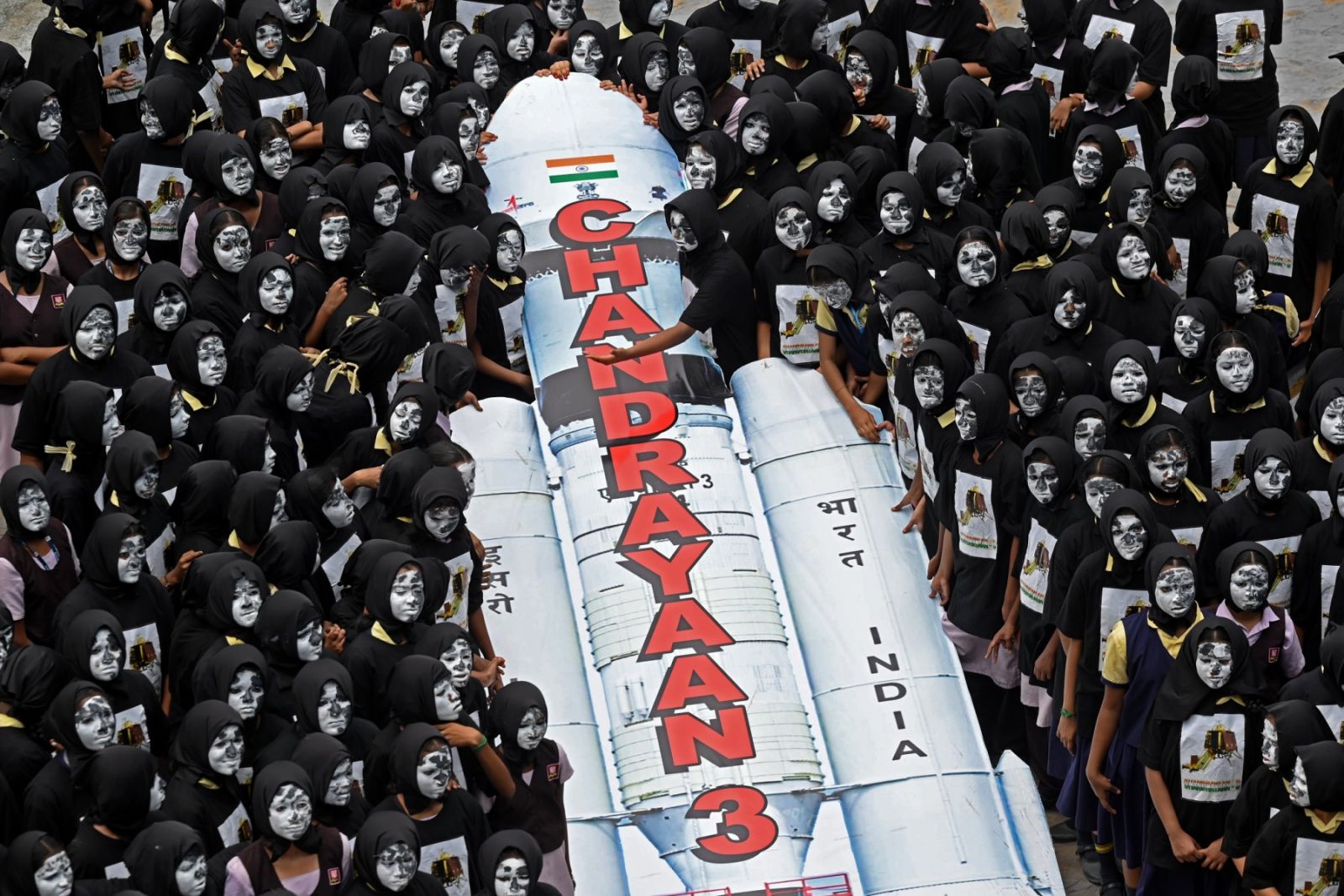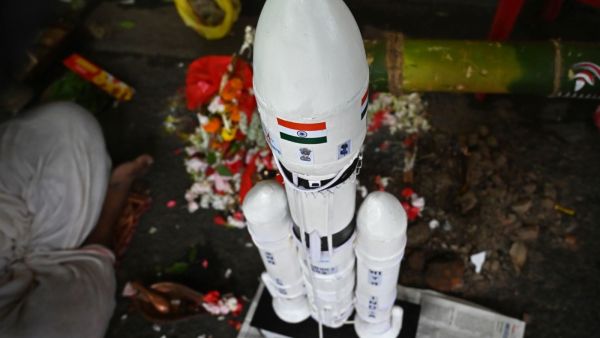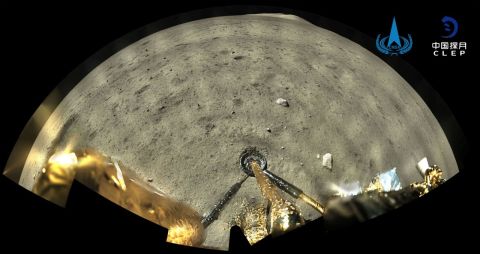ALBAWABA – India may be first to land on the Moon’s South Pole later on today just days after the Russians failed to land their probe, news agencies reported.
Chandrayaan-3, meaning "Mooncraft" in Sanskrit, is scheduled to touch down shortly after 6:00 p.m. India time (1230 GMT) near the lunar South Pole, according to Agence France-Presse (AFP).
India attempted this lunar adventure back in 2019 but failed.
This latest attempt comes just days after Russia's first Moon mission in almost 50 years, which also failed. However, former Indian space chief K. Sivan said the latest photos transmitted by the Mooncraft indicate the voyage will end in success, AFP reported.

"It is giving some encouragement that we will be able to achieve the landing mission without any problem," he told AFP on Monday.
"Landing on the south pole (of the moon) would actually allow India to explore if there is water ice on the moon. And this is very important for cumulative data and science on the geology of the moon," Carla Filotico, a partner and managing director at consultancy SpaceTec Partners, told Reuters.
The world has been racing to reach the lunar South Pole for decades.
The existence of water ice and other minerals there could help set up a pot-stop for space travel and missions to Mars and elsewhere.
Sivan added that the Indian Space Research Organisation (ISRO) had made corrections after the failure four years ago. Back then, scientists lost contact with the previous lunar module moments before its slated landing, Reuters reported.

"Chandrayaan-3 is going to go with more ruggedness," he said. "We have confidence, and we expect that everything will go smoothly."
Notably, only Russia, the United States and China have previously achieved a controlled landing on the lunar surface, according to Reuters. And all previous attempts to land on the South Pole of the Moon have failed.
The world is watching with much anticipation as India may be first to land on the Moon’s South Pole.
India may be first to land on the Moon’s South Pole and for a fraction of the price
Although the Indian lunar mission is taking longer than previous missions sent out by the United States (US) and other rival programs, it is run on a significantly lower budget, according to Reuters.
The US Apollo missions in the 1960s and 1970s arrived on the moon in a matter of days.
India is using rockets much less powerful than those the US used back then, meaning the probe must orbit Earth several times to gain speed before embarking on its month-long lunar trajectory.
The spacecraft's lander, Vikram, meaning "valour" in Sanskrit, detached from its propulsion module last week and has been sending back images of the moon's surface since entering lunar orbit on August 5.

India has a comparatively low-budget aerospace programme, but one that has grown considerably in size and momentum since it first sent a probe to orbit the Moon in 2008.
The latest mission comes with a price tag of $74.6 million – far lower than those of other countries, and a testament to India's frugal space engineering.
The US spent $25.8 billion on Project Apollo between 1960 and 1973, approximately $257 billion when adjusted for inflation to 2020 dollars, according to the Planetary Society.
Reuters’ experts say India keeps costs low by copying and adapting existing space technology. As well as thanks to an abundance of highly skilled engineers who earn a fraction of their foreign counterparts' wages.
In 2014, India became the first Asian nation to put a satellite into orbit around Mars and is slated to launch a three-day manned mission into Earth's orbit by next year.









